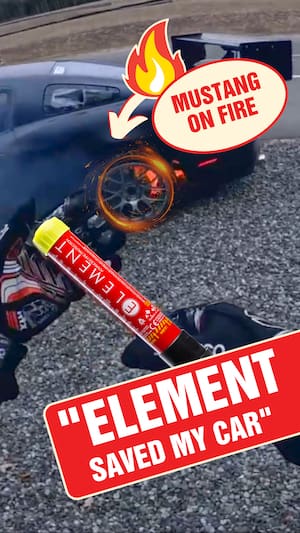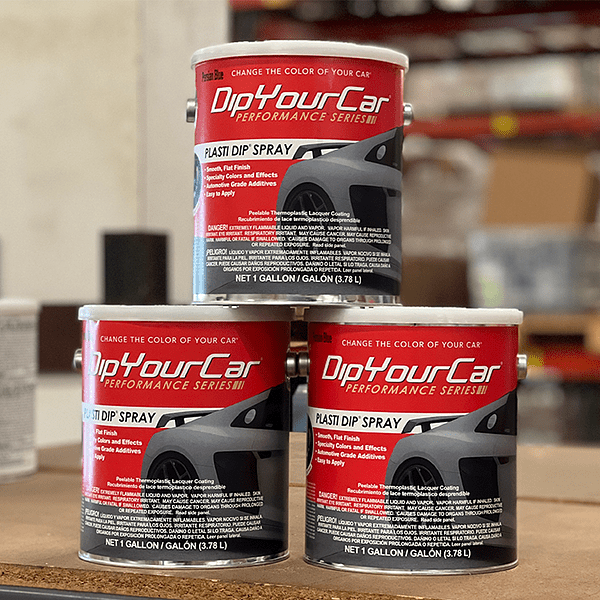
I know its hard to believe but there was a flaw in the chassis circuit wiring in our coach. I say flaw, actually every GM vehicle of the era was wired exactly the same so I’m not sure exactly why our coaches are more susceptible to this problem but it looks like they do.
Man, I’m not kidding, if you have not done this or feel it does not pertain to you— you are wrong — its as strong a warning as I can give you. Nothing short of knowing this problem is handled will do, nothing short of replacing this circuit will assure you this situation will not happen to you.
The alt. indicator light/regulator trigger circuit uses a 10 ohm solid core resister wire that is wadded up in the main harness under the radio in the dash and is not fuse protected. Over the years, this wire turns into a sort of heater element and heats up the interior of the harness to the point that it actually melts the insulation of the wire bundle to a solid pile of “ooze” and then guess what, the wires short to one another and funny things start happening in the coach! Things will stop working or start working on their own, maybe smoke, maybe not but the outcome is always the same– the harness must be rewired and that, my friend, is where this write up begins. I hope, in laying this out, you will understand the importance of addressing this issue and what you can do about it. I have not come up with this from a book, this lesson was learned out in the bay from rewiring harnesses and seeing the damage done from this problem, you can scribble theory all day long, you can debate the merits but I am telling you what burned my finger and what cost many people a bunch of money to fix! OK, it is a bit long so grab some pretzels and a drink and lets go”
This “nichrome” wire will heat up to a calculated 300+ degrees when the ignition key is on but the motor is not running. This heater wire is buried deep in the main harness for the dash just under the dash radio in the main bundle. The purpose of this resister wire is to drop the voltage reaching the “trigger” leg of the alternator regulator to turn it on at idle. There are many ways they could have provided a lower voltage to the regulator but of course this and most other engineered designs were ultimately decided by the lowest bidder. I hate to say it, but that has proven itself to be a bad idea. I have seen many coaches lately with damage to the harness in this area due to this solid core wire.
You really need to check your harness and bypass this potentially dangerous circuit adding a new circuit in its place. This is the only way you can assure yourself your coach harness will not fall victim. Any circuit that continues to use this unfused nichrome wire circuit does not go far enough to protect from this problem.
This is how I deal with the problem if you were to bring your coach to me. Sure it’s more involved than plugging in something but this totally eliminates the problem. If I work on your coach and something happens–whether I did something wrong or not, the customer will naturally look at me and want me to help– time is money so I must repair something as well as possible the first time, I cannot play with it, I must fix it and this is how I can tell you to “do the right thing”
- Be sure that any mods you do to your wiring be done properly, tagged well for remembering what you did in the future and wires run in a logical pattern. Tap into the harness at points that are easy to find and logical to be able to understand by someone other than you and for gosh sakes make it to last, do not had away modifications and if anything make then plainly visible and understandable. I can’t tell you how many “scotch locks” (get away from those things), bulldog, duct and scotch taped wires (there is a place for that stuff but its not in the wiring), too small gauge wire, wires too close to dangerous area like hot motors and just down right rigged stuff and rat nests that there is no way I could figure out the problem because there is no way to figure out what was done. SOP on that sort of stuff is to rake it all out, go back to basics and rewire the whole 9 yards. Please, please, please do not rig this circuit here!
- Know that you are seeking to fix, understand what your new circuit will do and how it will effect other circuits. Have you ever turned on the parking lights and have the washers come on or turn on the radio and blow out the dash illumination? OK, so you know what I mean!
- Don’t make your wiring modification so complicated to use that you are the only one that knows how to work or repair it. Ever had to get up in the middle of the night just to move your car cause your son had to get his car out for a date and you were the only one that could start your car? OK, I bet ya know what I mean!
OK, there are those that solve the symptom but never cure the problem, the problem here is the alternator indicator light circuit is unprotected and in harms way. Ok, replace the whole dang thing, don’t assume that if you blockthe circuit that things we be OK, what if some damage is already done? I do not use any portion of the original circuit, if the resister wire has already been heated up a few times and has done some damage, you will never know until the meltdown happens and that my friend is too late. No, totally bypass the circuit with a new circuit. You cannot actually take out the wiring from the harness without some digging but you can do the next best thing, you can isolate the circuit, not use it at all by disconnecting it from the system. Opening the circuit by removing the connection to the alternator and light indicator. We wire a new alt. indicator light circuit outside the harness, disconnect the original one and leave it there.
Refer to your service manual wiring schematic and look at this circuit. This is the circuit from the factory service manual. It uses only 2 components, we will use this 100 ohm 10 watt 10% tolerance ceramic resister and a 5 watt diode. Yes, I have been criticized because I use a 100 ohm resister instead of the 10ohm one drawn. I tried a 10 ohm resister and the dang thing got so hot it burned my fingers! Hey wait, aren’t we having to do this because GM screwed up or something? I want this circuit to work, not get hot and be stable so I use a 100 ohm resister– it works , does not get hot and is stable. They are a bit of overkill on their current handling capability but they are cheap and overbuilding a circuit never hurt anything. There are 3 connection points, the alternator, the alt. indicator light itself and an ignition power source in the fuse box. Lets do the connections on each, one at a time.
Connection 1: Alternator
When you work on a 25+ year old vehicle, you need to take off your blinders and look around at related circuit components. You are looking for potential problems caused by a list of things: chaffed insulation, broken wire strands, heat damage among others. OK, look at the connections on the alternator There are 3 connections, thismedium sized brown wire shows heat damage caused by broken strands at the connector, the wires are stressed and the connector is pulling out of the casing. The small wire has a butt connector on it which means somewhere in its past something happened (who knows) and the large main power wire is heat damaged and has the wrong size cremp connector. See what I mean, if I had gone in there , cut the small wire and went on, who knows what would happen down the road! If your connector is good & in tack, use it and simply cut and connect a new wire, but if there is “funk” there, eliminate it all. The brown wire will be cut and the high quality yellow spade connector will be crimped with the proper crimp tool (very important). The large wire gets a new connector drilled out to fit snugly on the stud (look at the size of the eyelet that was on the stud before!) and the small wire (actually the one we will be rewiring) will get a high quality blue spade connector properly crimped. , the new green wire is heat insulated with the end taped to keep out water. The jacketed wire is run parallel to the original harness up to the front pass. side hood area. Now, anyone one in the future can look at what was done and quickly understand that the original trigger was bypassed and they only need to follow the new insulated wire to see what was done. The brown wire is routed taking the stress off of the connector, the burned wire was cut out and the main power wire has a proper new connection. All 3 connections were upgraded to new reliable connections and future problems were eliminated. I leave the new wire exposed, along but outside the split loom so it is obvious something had been altered. One day you will thank me for that when you go in to do some other maintenance and wonder what that wire is!
Connection 2: Ignition Power
Next we need to tap into the ignition circuit and where better to do that than at the fuse box Always fuse protect and label all new circuits added to a harness, how can someone in the future know what is going on and if there is a problem with the circuit, the rest of this new harness is protected by the 5 amp fuse. Run this wire also to the front pass. hood area.
Connection 3: Alternator Indicator Light
Finally we need to disconnect the original trigger wire to the alt. indicator light, which will totally take the original circuit out of use and render it safe, Normally this is done by cutting the small brown wire going to position “G” on the instrument cluster wire connector. In this case, we cut the orange wire (this coach had a different dash installed), capped off the original wire and connected a new red wire to the light socket. This dash was rewired by Explorer in the middle 90’s. All gauges and indicators were changed. You may have to rely on understanding the circuit, adapt and overcome like in this case. To ID the wire on an original dash, the wire in question will be a small gauge (thinnest wire on the connector) wire second from the left looking down from the top of the dash (brown with a white streamer) There are 2 wires to the indicator bulb, one goes to the main power where the rest of the dash circuits get their power and the other one (the brown wire we are looking for) comes off the indicator socket is the “trigger” for the alt. indicator light. This red wire is run over to the front pass. side hood area.
Now, we have 3 wires under the pass. front hood to deal with: a green wire from the alternator, a red wire from the indicator light and a yellow wire from the ignition terminal in the fuse box use whatever color wires you can get). Connect the resister and diode like this and connect the green wire at the top, the red and yellow wires at the bottom. Be sure the diode has the band to the top (green wire) for proper polarity. Let the circuit hang in the compartment and try it out by first turning on the ignition key, does the alt. indicator light come on? If so, start the motor and see if the light goes off. If it goes off, the circuit is installed properly. Turn off the key and watch to see the light does not come on. Things are good and you are ready to mount the circuit. Tie wrap the connections to keep stress off of them and mount the circuit up high in the compartment to keep water and dirt from it. There now your coach should be safe from effect due to that pesky old alt. light resister wire. The circuit is totally isolated, labeled, fuse protected and properly wired.
As I said before, there are many ways to correct the problem but usually only one way to totally eliminate the problem and in this case here is my answer. Hope this helps you, we usually charge an hours time to install this modification. You will need a diode, a resister, a fuse holder and 5 amp fuse, an assortment of connectors and some 12 and 14 ga. hook up wire. This is not an involved circuit but one everyone needs to address in some way. You can find these parts at your local Radio Shack or call me and I’ll send them to you for $5.
Now that you’ve read all of that mess, here is the “Cliff Notes” version I talked about at the beginning, BTW– I have had several questions concerning the in line diode to block backflow current Sure, that is a valid question and a valid idea. Hey, let me know & I’ll include another diode to do that blocking job too. It will already be wired in so just crimp and go.

Support The Motorhome Rehab Ranch on Patreon. Click to subscribe now!
Guest contributor, Jim Bounds, writes technical articles about GMC Motorhomes, explores the history of this very unique RV, and takes the reader through some of the more challenging restoration projects he and his team have worked on over the years.
© Jim Bounds, 2021.










































